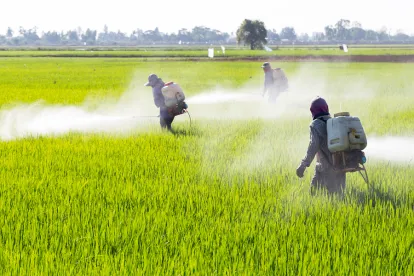On November 30, 2020, the U.S. Environmental Protection Agency (EPA) announced the availability of, and requested comments on, the updated Draft Guidance for Plant Regulator Products and Claims, Including Plant Biostimulants (Draft Guidance). 85 Fed. Reg. 76562. The original Draft Guidance (2019 Draft Guidance) was made available on March 25, 2019. EPA states that the updated Draft Guidance “incorporates diverse and helpful changes made in response to stakeholder feedback” received during the initial comment period in 2019 and “clarifies which biostimulants, biological substances, and mixtures, in addition to the associated product label claims, EPA considers plant regulators.”
EPA is now seeking comments on those changes. Comments on the updated Draft Guidance are due on or before December 30, 2020, in docket EPA-HQ-OPP-2018-0258. EPA states that it anticipates issuing the Draft Guidance in final form in January 2021.
Updates to the Draft Guidance
EPA made several changes to the Draft Guidance. Of note, the Disclaimer section of the Draft Guidance EPA now states that the “contents of this document do not have the force and effect of law and are not meant to bind the public in any way.” It states further that the “document is intended only to provide clarity to the public regarding existing requirements under the law or agency policies.”
Additional changes of interest to the updated Draft Guidance include:
-
Revised Definitions of “Plant Biostimulant”: In the 2019 Draft Guidance, EPA sought comments on whether it should develop, through rulemaking procedures, a definition for plant biostimulant. EPA states that subsequent to the release of the 2019 Draft Guidance, the U.S. Department of Agriculture (USDA) issued a Report to Congress on Plant Biostimulants that included two new definitions of plant biostimulants. As a result, EPA states that it does not plan to develop a separate definition of plant biostimulants. In the Draft Guidance, EPA deleted the Proposed European Commission definition of plant biostimulant and added two of USDA’s new definitions of plant biostimulants:
-
2019 USDA Report Alternative Definition 1: A plant biostimulant is a naturally-occurring substance, its synthetically derived equivalent, or a microbe that is used for the purpose of stimulating natural processes in plants or in the soil in order to, among other things: improve nutrient and/or water use efficiency by plants, help plants tolerate abiotic stress, or improve characteristics of the soil as a medium for plant growth. The characteristics may be physical, chemical, and/or biological. The plant biostimulant may be used either by itself or in combination with other substances or microbes for this purpose.
-
2019 USDA Report Alternative Definition 2: A plant biostimulant is a substance(s), microorganism(s), or mixtures thereof, that, when applied to seeds, plants, the rhizosphere, soil or other growth media, act to support a plant’s natural nutrition processes independently of the biostimulant’s nutrient content. The plant biostimulant thereby improves nutrient availability, uptake or use efficiency, tolerance to abiotic stress, and consequent growth, development, quality or yield.
-
-
Clarification of Focus on Pesticide Claims and Composition: In the section “Pesticide Products Required to be Registered,” EPA has added the following paragraph:
The Agency historically has had a claims-based approach to pesticide regulation, but emphasizes that the term “claims-based” does not mean “claims-only based.” As the Agency has explained, “…the term “pesticide product” will be used to describe a particular pesticide in the form in which it is (or will be) registered and marketed, including the product’s composition, packaging and labeling.” (49 FR 37917, September 26, 1984.) The Agency has always considered the composition of a product, as well as its associated claims, when making a regulatory determination, which is reflected in 40 CFR 152.15.
In the “Claims Examples” section, EPA further adds the following sentences:
When claims for increased or decreased growth, yield, germination, maturation, etc. are consequent to intended uses of products or substances as plant nutrients (fertilizers), plant inoculants, soil amendments, and/or as other non-pesticidal uses, such products and substances may be excluded from regulation under FIFRA in the absence of any plant regulator claims. The example claims listed in Tables 1a through 1c are specifically tied to the exclusions from the FIFRA definition of a plant regulator and are worded as such. When such claims for accelerating or retarding the rate of growth, or maturation, the behavior of plants, or the produce thereof are made without qualification or reference to a specific exclusion, such claims are and will continue to be considered plant regulator claims.
-
Revisions to Claim Examples: EPA has modified the examples of plant nutrition, plant inoculant, soil amendment, generic non-pesticidal, and pesticidal claims as set forth in Tables 1a, 1b, 1c, 2, and 3. Some of the changes move a claim from one chart to another. EPA has added that certain claims can improve foliar and seed nutrient conditions. Perhaps most importantly, EPA has added a footnote to each chart that the stated examples “are not comprehensive and other claims may include other synonymous terms and phrases.”
-
Discussion of Plant Regulator Active Ingredients: EPA has deleted what was Table 4 in the 2019 Draft Guidance, which provided a list of active ingredients contained in EPA registered products having modes of action that trigger regulation under FIFRA as a pesticide. Instead, EPA has added three new sections:
-
Substances that have no other use than as plant regulators or pesticides: EPA has identified certain substances that “are generally recognized to have no other significant commercially valuable use, either alone or in combination with other substances, other than use as plant regulators (i.e., as pesticides).” These include corn glutens; L-glutamic acid (LGA) and gamma-aminobutyric acid (GABA); homobrassinolide and other brassinosteroids; lysophosphatidylethanolamine (LPE); 1-Octanol; and sodium o-nitrophenolate, sodium p-nitrophenolate, and sodium guaiacolate.
-
Substances that may have plant regulator and non-plant regulator activity: EPA has identified “substances with additional modes of action, not considered to be plant regulator modes of action that may include, but are not limited to: the alleviation of abiotic stressors (e.g., temperature and water stress); increased water and nutrient use efficiency and/or uptake; increased availability of inorganic nutrients in the soil to plant roots and seeds; increased absorption of inorganic nutrients applied to plant foliage; and changes to the biotic and abiotic characteristics of soils making them a better medium for plant growth.” Those described by EPA include complex polymeric polyhydroxy acids (CPPAs) and humic acids (HAs); and seaweed extracts (SWE).
-
Regulatory approaches for substances and products that have multiple plant regulator and non-plant regulator modes of action: The Draft Guidance now states the following:
-
The Agency recognizes that CPPA, humic acids, seaweed extracts and other PBS products may possess multiple modes of action that are occurring simultaneously when applied to plant foliage, roots, seeds, other propagules, and to the soil. The Agency also recognizes that not all uses of PBS may be intended for plant regulator or other pest control purposes. If it can be demonstrated that a particular product has the activity claimed on the product label (and any other informational media) and does not make any plant regulator or pest control claims on the product label (and any other informational media) it may be excluded from FIFRA regulation. Pursuant to 40 CFR 152.15(b), the Agency will consider whether a substance “has no significant commercially valuable use” other than as a pesticide, when considering whether the substance (or product) is a pesticide. If it can be demonstrated that the substances contained in such products may have significant commercially valuable uses other than as plant regulators (i.e., pesticides), they may be excluded from regulation under FIFRA in the absence of any plant regulator claims (see examples in Table 3) and in the absence of any other pesticidal claims (e.g., anti-plant pathogen claims). Review of such “multiple use” products may be conducted by the Agency under PRIA Code M009.
For example, if a product containing seaweed extracts or humic acids is intended for use in alleviating abiotic stress (e.g., extreme temperature, drought/salt stress) on plants, or for stimulating increased nutrient assimilation from the soil, is labeled using product claim examples (Tables 1a-c and 2), and can provide product performance data supporting such product claims, the product may be excluded from regulation under FIFRA.
Commentary
The removal of Table 4 from the Draft Guidance appears to address comments submitted on the 2019 Draft Guidance that criticized EPA for developing a list of active ingredients that would trigger pesticide registration requirements when several of those substances possessed non-pesticidal modes of action. Interestingly, many of the significant proposed changes address issues related to composition and to substances and products with plant regulator and non-plant regulator modes of action, rather than claims. Also of note is EPA’s current intent not to initiate a rulemaking to define plant biostimulant, but instead to rely upon definitions developed by USDA and under review by Congress.
There are a significant number of issues of interest, and those with potentially affected products should review the updated guidance closely.





 />i
/>i
